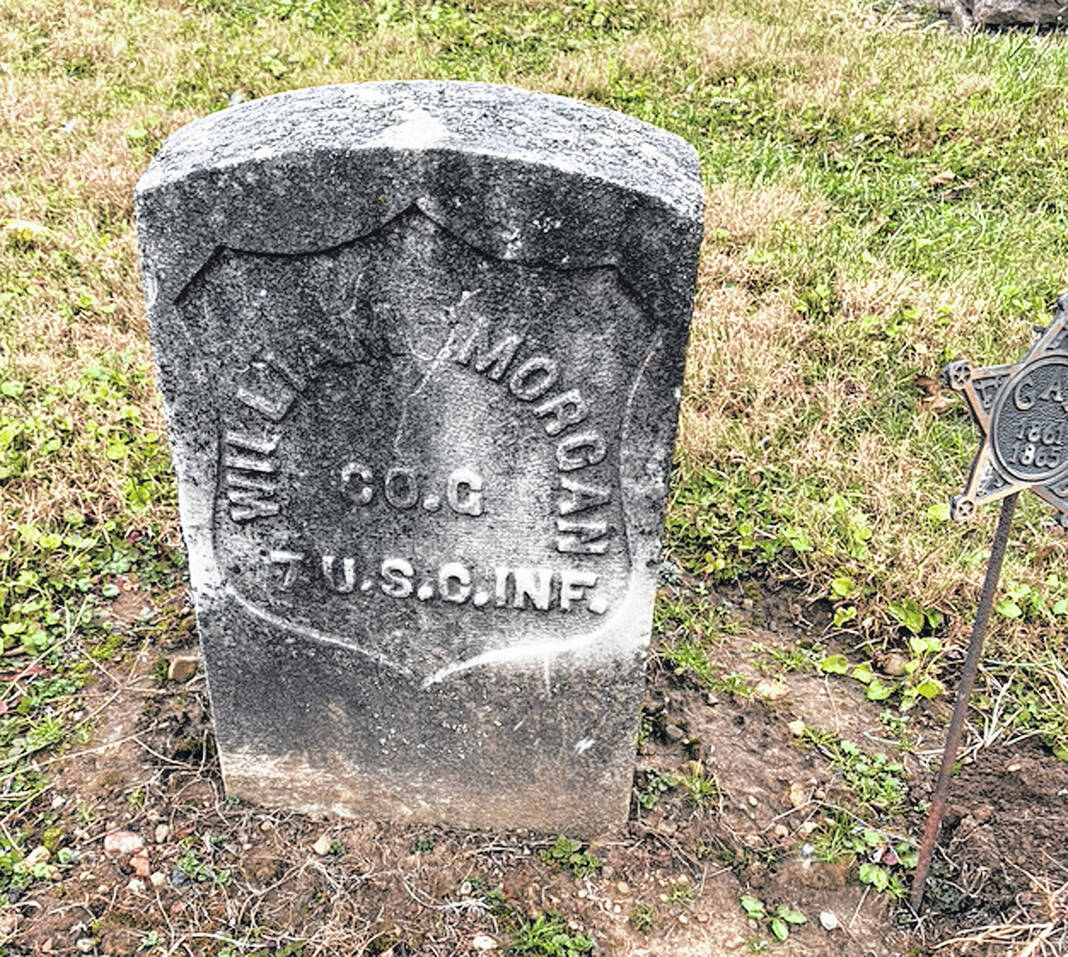
The Dec. 4, 1918 Sidney Daily News which published news of William Morgan passing away.
Submitted photo

The gravesite for Pvt. William Morgan is located at Graceland Cemetery, Sidney, Ohio.
Submitted photo
By Gregory K. Holobaugh
For the Sidney Daily News
SIDNEY — On Dec. 4, 1918, The Sidney Daily News reported prominently in its local section (page 5), that “William Morgan Dies Suddenly” earlier that day. Further, the paper explained that Mr. Morgan was a “well known” African American, who had “been a resident for many years … a blacksmith at the carriage factory of Miller & Smith” and “a veteran of the Civil War.” He was 74 years old. William Morgan was buried in Graceland Cemetery, near other Civil War veterans, his memorial reading “William Morgan, Co. G, 27th USC INF”. (https://www.findagrave.com/memorial/65498816/william-morgan)
Born in 1844, Morgan was likely a member of the hundreds of Randolph freed slaves that settled in the Miami Valley in 1846. In the 1900 Census, Morgan said that his mother was from Virginia, which supports the idea that he was among the freed Randolph slaves that came to Ohio. (See the Shelby County Historical Society. (http://shelbycountyhistory.org/schs/blackhistory/randolphsohio.htm).
Sidney’s first Black mayor, James P. Humphrey (1981-1987), was a descendant of the Randolph slaves.
William Morgan enlisted as a private in Company G, 27th United States Colored Troop (USCT) at Camp Delaware Ohio on April 5, 1864. (See University of Virginia archives, https://ead.lib.virginia.edu/vivaxtf/view?docId=uva-sc/viu01242.xml).
The 27th USCT had a proud battle history. Assigned to General Ulysses S. Grant’s Army of the Potomac, the 27th guarded supply trains in the Overland Campaign, and took part in the longest siege in US history at Petersburg, Virginia. The 27th charged into Confederate lines at Battle of the Crater on July 30, 1864 and was involved in other bloody battles before Petersburg in the Fall of 1864. The 27th also was part of amphibious operations against Fort Fisher in North Carolina, serving alongside another famous USCT unit, the 54th Massachusetts Infantry, which was memorialized in the film “Glory” (1989). After the fall of Fort Fisher, the 27th then marched into North Carolina with Gen. William Sherman’s army and was present at the surrender of the Confederate army under Gen. Joseph Johnston on April 26, 1865. PVT Morgan could take pride in his Civil War Service. (For more on the 27th, see
For Their Own Cause: The 27th United States Colored Troops by Kelly Mazurek, P2016). Morgan was mustered out of the Army on Sept. 21, 1865.
After the Civil War, he stayed in Sidney, getting married in 1881, and listing his occupation as blacksmith in the 1900 Census. By the time of his death, he could reflect that he had been a participant in Sidney’s post-Civil War manufacturing boom, leading into the 20th century. (see Ancestry.com)
PVT William Morgan deserves to be remembered for his sacrifices as a Civil War veteran. In fact, the contributions of Black American soldiers in the Civil War were critical to the Union’s success in America’s bloodiest war, making up about 10% of Union troops. African Americans were not just passively freed by the
North – many fought for their freedom! We should remember as well that African American men and women have fought in all of the nation’s wars. And like PVT William Morgan, Shelby County men and women have always been ready to serve.

